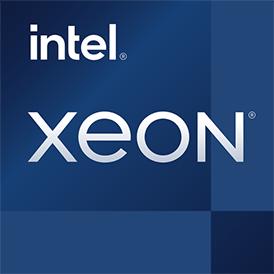 Geekbench 3, 64bit (Multi-Core)
Geekbench 3, 64bit (Multi-Core)
|
|
Intel Xeon E5-2680 v4
14C 28T @ 2.4 GHz
|
50246
|
|
|
Intel Xeon E5-2650 v2
8C 16T @ 2.6 GHz
|
31204
|
 Estimated results for PassMark CPU Mark
Estimated results for PassMark CPU Mark
|
|
Intel Xeon E5-2680 v4
14C 28T @ 2.4 GHz
|
17951
|
|
|
Intel Xeon E5-2650 v2
8C 16T @ 2.6 GHz
|
13236
|
 Geekbench 5, 64bit (Multi-Core)
Geekbench 5, 64bit (Multi-Core)
|
|
Intel Xeon E5-2680 v4
14C 28T @ 2.4 GHz
|
10459
|
|
|
Intel Xeon E5-2650 v2
8C 16T @ 2.6 GHz
|
4893
|
 Geekbench 6 (Multi-Core)
Geekbench 6 (Multi-Core)
|
|
Intel Xeon E5-2680 v4
14C 28T @ 2.4 GHz
|
7966
|
|
|
Intel Xeon E5-2650 v2
8C 16T @ 2.6 GHz
|
3808
|
 Geekbench 3, 64bit (Single-Core)
Geekbench 3, 64bit (Single-Core)
|
|
Intel Xeon E5-2680 v4
14C 28T @ 2.4 GHz
|
3887
|
|
|
Intel Xeon E5-2650 v2
8C 16T @ 2.6 GHz
|
2460
|
 Cinebench R20 (Multi-Core)
Cinebench R20 (Multi-Core)
|
|
Intel Xeon E5-2680 v4
14C 28T @ 2.4 GHz
|
3107
|
|
|
Intel Xeon E5-2650 v2
8C 16T @ 2.6 GHz
|
2166
|
 Cinebench R15 (Multi-Core)
Cinebench R15 (Multi-Core)
|
|
Intel Xeon E5-2680 v4
14C 28T @ 2.4 GHz
|
2004
|
|
|
Intel Xeon E5-2650 v2
8C 16T @ 2.6 GHz
|
966
|
 Geekbench 6 (Single-Core)
Geekbench 6 (Single-Core)
|
|
Intel Xeon E5-2680 v4
14C 28T @ 2.4 GHz
|
1069
|
|
|
Intel Xeon E5-2650 v2
8C 16T @ 2.6 GHz
|
632
|
 Geekbench 5, 64bit (Single-Core)
Geekbench 5, 64bit (Single-Core)
|
|
Intel Xeon E5-2680 v4
14C 28T @ 2.4 GHz
|
892
|
|
|
Intel Xeon E5-2650 v2
8C 16T @ 2.6 GHz
|
622
|
 Cinebench R20 (Single-Core)
Cinebench R20 (Single-Core)
|
|
Intel Xeon E5-2650 v2
8C 16T @ 2.6 GHz
|
249
|
|
|
Intel Xeon E5-2680 v4
14C 28T @ 2.4 GHz
|
213
|
 Cinebench R11.5, 64bit (Multi-Core)
Cinebench R11.5, 64bit (Multi-Core)
|
|
Intel Xeon E5-2680 v4
14C 28T @ 2.4 GHz
|
24.7
|
|
|
Intel Xeon E5-2650 v2
8C 16T @ 2.6 GHz
|
11.1
|
 Cinebench R11.5, 64bit (Single-Core)
Cinebench R11.5, 64bit (Single-Core)
|
|
Intel Xeon E5-2680 v4
14C 28T @ 2.4 GHz
|
1.7
|
|
|
Intel Xeon E5-2650 v2
8C 16T @ 2.6 GHz
|
1.4
|
